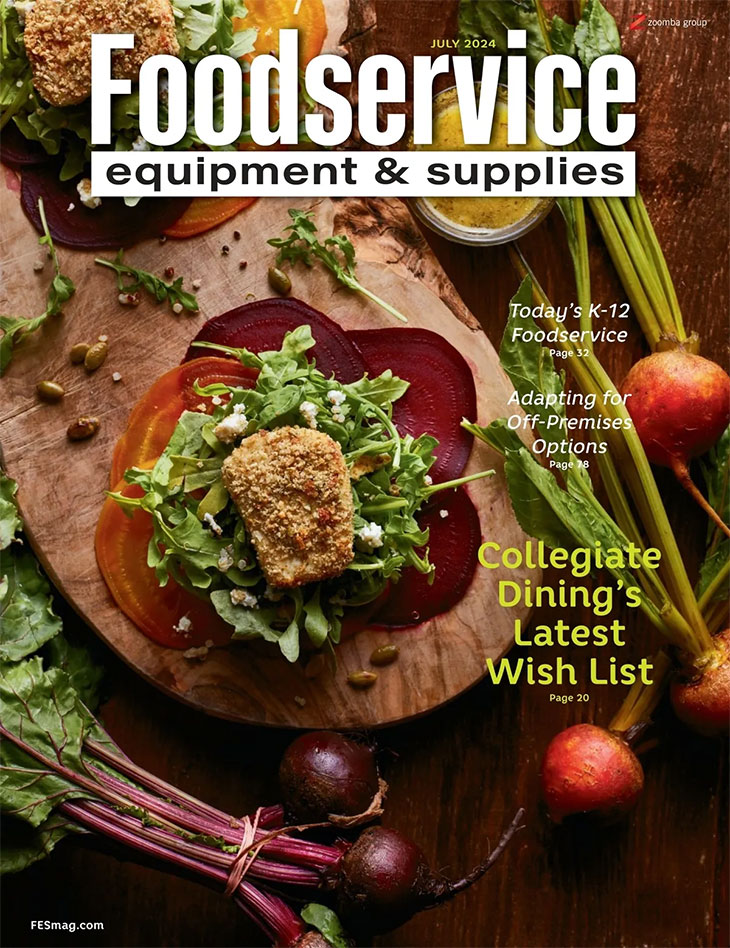Elevating pizza to a new level of popularity at Rex Healthcare took a lot of work, but the end result continues to exceed expectations.
The continuing popularity of fast-casual concepts keeps drawing the attention of some of the fine-dining segment’s biggest names. But designing and equipping a fast-casual restaurant can differ greatly from developing a fine-dining concept, as one design consultant and chef point out.
A rapidly evolving healthcare environment has led to a number of organizations aligning with one another. This can impact the population these healthcare foodservice operators need to serve as well as how they provide food and nutrition services. Such was the case with the 72-bed Syosset Hospital when it took on a 32-bed orthopedic program from another hospital in February of 2014.
Commercial kitchens can easily run in the tens, even hundreds of thousands of dollars. With that sort of outlay, operators spend long hours working with design consultants and dealers to specify equipment that best fits their budget and their needs.
Consumer interest in healthy, vegetarian restaurant concepts continues to grow. The successful ones use equipment packages that generate maximum yield and flavor profile when working with ingredients that can be costly.
After several chains embraced the LEED for Retail pilot program prior to its launch in 2009, the U.S. Green Building Council (USGBC) introduced a series of volume programs designed to make it easier for companies wanting to create LEED prototypes and duplicate those efforts on a larger scale.
This has been quite the year for Dan Henroid, MS, RD, director of Nutrition and Food Services (NFS), and sustainability officer for UCSF Medical Center, and his staff. They've had a major operational expansion and made gargantuan adjustments to their services.
Mirroring the restaurant industry, sports and entertainment venue operators, managers and promoters continue to aggressively upgrade their food selection and quality, make their menus more flexible and enhance customer service to improve the fan experience. This has led to higher-quality concessions and higher-end suite and club seat foodservice programs, transforming a growing number of major venues into food destinations.
After a few ups and downs, the frozen yogurt business seems to be leveling off as consumers find its "better-for-you" ingredients and customizable menu items appealing.
A minor league baseball park may not seem like a typical culinary destination, but for fans of the Ft. Wayne TinCaps, the food at Parkview Field is a definite draw. Stadium Journey magazine ranked the Indiana venue as the number-one minor league facility and in the top 10 for an event experience among stadiums overall. Food and beverage options weighed heavily in the overall score.
Like many frozen yogurt brands, Tutti Frutti got its start in Southern California, but what sets the chain apart is its operational model. The operation's 700 locations in 30 countries are run by licensees, who are supported by Wellspring Industry Inc., a supplier and wholesaler of soft-serve frozen yogurt mixes and equipment.
Seems as if every foodservice design project today operates on a fast track. So how can design teams accomplish what used to take years in a matter of months? One seasoned foodservice consultant suggests a variety of steps including leveraging technology, improving communication and going back to the basics.
When husband and wife Danna and Adam Caldwell opened the first Menchie's in Los Angeles back in 2007, they didn't anticipate that it would be the start of one of the largest franchises of its kind.
Despite the well-documented troubles some of the larger chains continue to experience, consumers’ appetites for burgers remain as strong as ever. The key to success in this crowded and competitive segment is an evolving menu that features high-quality ingredients, paired with a versatile equipment package that brings these flavors to life. Here we look at two operators who continue to accomplish this.
As sustainability becomes more mainstream for businesses of all types, the many ways to "go green" can overwhelm foodservice operators in all segments.
Warewashers — they’re the workhorses of the back of the house. They clean. They sanitize. And now they can even help lower energy consumption. Sure, you can specify a qualified energy-efficient model and call it a day, but more often than not, user error and maintenance neglects will cut into your energy- and water-saving potential over the long haul. So we asked Amin Delagah, project engineer and resident water guru for the Food Service Technology Center in San Ramon, Calif., to review some of the best practices for optimal performance and maintenance to maximize both energy and water for four main dishwasher types.




